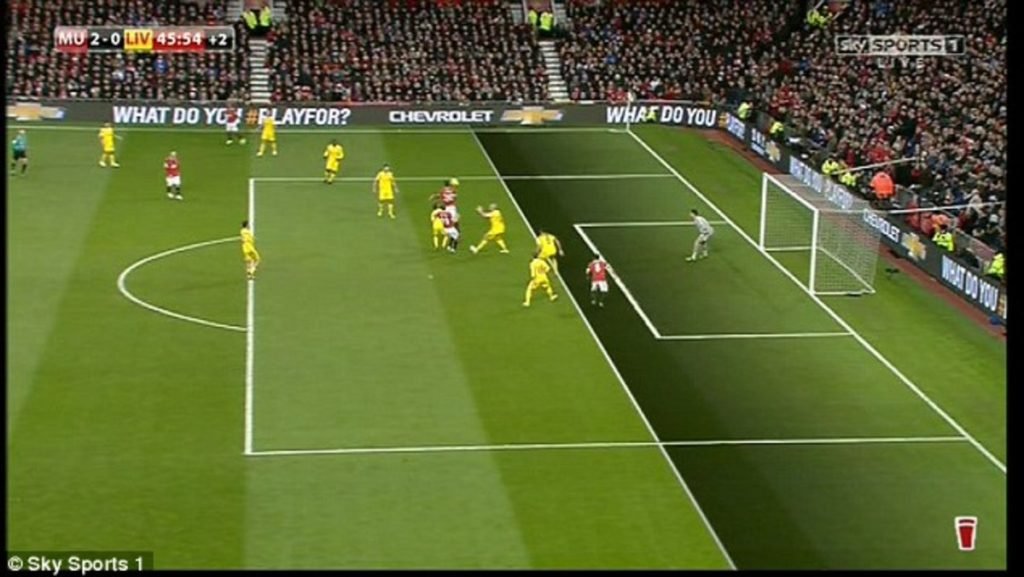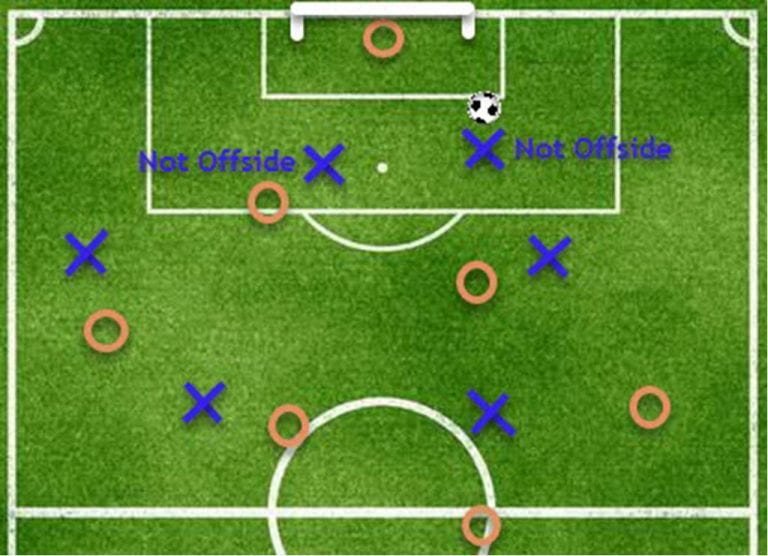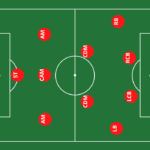Understanding the Offside Rule in Soccer
- Last Updated -
The Offside Rule
Introduction: Soccer, also known as football, is one of the most popular sports in the world. It has its own set of rules, and one of the most controversial and difficult to understand is the offside rule. In this article, we will explain the offside rule in soccer, using information from various sources. [1, 2, 3, 4].

What is the Offside Rule in Soccer?
In soccer, a player is in an offside position if they are closer to the opponent’s goal than both the ball and the second-last defender, at the moment the ball is played to them. However, it is essential to understand that being in an offside position does not necessarily mean that the player is offside. The player must also be involved in active play to be penalized for offside

What Constitutes Active Play?
Active play can be defined as being involved in the play by either touching the ball or interfering with an opponent’s ability to play the ball. If a player is in an offside position but not involved in active play, they are not penalized. However, if the player is involved in active play, they are penalized, and the opposing team is awarded a free-kick
How to Be Onside?
To be onside, the player can be in their own half of the field or level with the second-last defender when the ball is played to them . The second-last defender is usually the last outfield player, not including the goalkeeper. If the player is level with the second-last defender when the ball is played to them, they are considered to be onside.
The Importance of the Offside Rule in Soccer
The offside rule has been a subject of controversy for a long time, with many fans and players alike struggling to understand its nuances. However, with the advent of VAR (video assistant referee) technology, offside decisions are becoming more accurate and consistent. As of the 2022 World Cup, semi-automated offside technology is being used to help enforce the rule. The offside rule is critical to ensure that the game is played fairly and to prevent players from gaining an unfair advantage.
Conclusion:
In conclusion, the offside rule in soccer is a critical aspect of the game. Players must be aware of their positioning on the field and the position of the second-last defender to avoid being penalized for offside. With the help of VAR and other technologies, the offside rule is becoming more accurate and consistent, leading to fairer outcomes in the game.
What is the hardest position in soccer to play?
What is The Hardest Position in Soccer Importance of understanding positions in...
Read MoreWhat is a Soccer Assist?
The Importance of Teamwork in Soccer The importance of teamwork in soccer...
Read MoreBest Goalkeeper Gloves 2024
What are the best goalkeeper gloves? When it comes to soccer equipment,...
Read MoreUnderstanding the 4-5-1 Soccer Formation
The Importance of Understanding the Formation Soccer is a tactical sport, and...
Read MoreWhat is the best soccer position to play?
What is the best soccer position? Soccer is a sport that requires...
Read MoreWhat is Soccer Relegation?
Introduction: Exploring the World of Soccer relegation Soccer is one of the...
Read MoreWhat is a cap in soccer?
If you're a soccer fan, you've probably heard the term "cap" being...
Read MoreSoccer vs Football Field – A Tale of Two Fields
Comparing the Corners: Soccer Field Vs Football Field Shapes Let's talk a...
Read MoreBest Indoor Soccer Shoes 2024
Indoor soccer has been gaining popularity over the years, with more and...
Read MoreHandball Rule In Soccer – Law #12
Soccer is one of the most popular sports globally, with millions of...
Read Moresoccer position numbers quick guide
Each player on the field has an important job as it relates...
Read MoreSoccer Substitution Rules: The Strategic Art of Changing the Game
Soccer, known as the beautiful game worldwide, has seen various changes to...
Read MoreDominate the Field With The 4-2-3-1 Soccer Formation
Soccer is a dynamic game that constantly evolves, and its tactics are...
Read MoreSoccer History USA: From Struggles to Successes
Soccer, also known as football, is the world's most popular sport, with...
Read More5-3-2 Soccer Formation: History and Tactics
Are you a soccer enthusiast looking to understand the tactical intricacies that...
Read MoreSoccer Overtime Rules: Everything You Need to Know
Introduction: Overtime Soccer Rules Everything You Need To Know Soccer is a...
Read MoreMastering Soccer Outside Back Position: Tips and Techniques
Soccer is a dynamic sport, and the outside back position is no...
Read MoreThe Mercy Rule In Soccer And The Roll It Plays
Picture this: a soccer match, with one team dominating the field and...
Read MoreSoccer Position Abbreviations – A Beginners Guide
Hey there! You've landed on "Decoding Soccer Positions: A Rookie's Handbook". This...
Read MoreBest Soccer Cleats for Flat Feet 2024
Unlock your soccer potential and tap into the game-changing secret: the ultimate...
Read More

















